Anatomy and physiology 1st semester mid-term
1/68
There's no tags or description
Looks like no tags are added yet.
Name | Mastery | Learn | Test | Matching | Spaced |
|---|
No study sessions yet.
69 Terms
Axillary
Armpit
Tarsals
Ankles
Patellar
Kneecap
Medial
Midline (middle of body)
Inferior
Below
Carpal
Wrist
Posterior
In the back of the body
Lateral
Away from midline in the sides
Distal
Farthest away from origin point
Abdominal
Abdomen belly area
Buccal
Cheek (inner)
Digitals
Fingers and toes
Femoral
Thigh area
Deep
Internal; away from surface of body
Inguinal
Groin
Orbital
Sockets housing eyeballs
Differentiate anatomy & physiology
Anatomy studies the structure of the bones, and physiology concerns the function of the body
What is the Languno
The hairy cloak covering a baby shed until 7th month
Levels of Structural organization From simplest to most Complex:
Chemical level, Cell level, tissue level, organ level, organ system level, organism level
What is the structural and functional unit of life?
The cell
Describe the anatomical position
The body is erect with the feet slightly parted. The palms are faced forward and the thumbs point away from the body
What is the function of the lymphatic system?
Drains excess fluid leaked from blood vessels and returns to blood
What is the function of yellow marrow?
It stores fat
What is the function of red marrow?
It creates blood cells
What is the function of the urinary system
It rids metabolic waste from body
Herpes simplex virus is cause of
Cold sores
Tinea pedis is known as
Athletes foot
Inflammation of sebaceous glands causes
Acne
What is the most posterior bone of the cranium
Occipital bone
Forms the bridge of the nose?
Nasal bones
Bone with groove for passage of tears
Lacrimal bones
Direction terms: Superior
Upper
Inferior
Lower
Dorsal
Posterior
Lateral
Away from midline
Distal
Farther from point of attachment
Deep
More internal
Ventral / anterior
Front of body
Medial
Midline
Proximal
Closer to point of attachment
Superficial
Body surface
Alopecia
Baldness
Part of hair projecting from scalp
Shaft
Axial skeleton vs appendicular skeleton
Axial skeleton forms longitudinal axis of body appendicular forms limbs and girdles
Tailbone
Coccyx
Butterfly shaped bone spanning width of skull?
Sphenoid bone
3 bone markings located on temporal bone
Styloid process, mastoid process, external acoustic meatus
ABCD rule
Asymmetry- 2 sides do not match
Border- Not smooth; irregularities
Color- varies color
Diameter- larger than size of pencil eraser (>6mm)
What is the diaphysis, epiphysis and epiphyseal plate of long bone?
Diaphysis: shaft of long bone
Epiphysis: ends of long bone
Epiphyseal plate: Disc of hyaline cartilage that grows lengthwise
Identify four changes to the skin and subcutaneous tissue as we age. Describe how these changes are noticed
Skin thins- bruises easily
Decreased sebaceous glands- drier skin
Decreased subcutaneous tissue- intolerance to cold
Decreased elasticity - skin sags
Intercellular fluid:
solution inside cell
What are the four primary tissue types and what is the function of each
Nervous- irritability / conductivity
Muscle - movement
Connective - support
Epithelial - covering

1
Proximal epiphysis
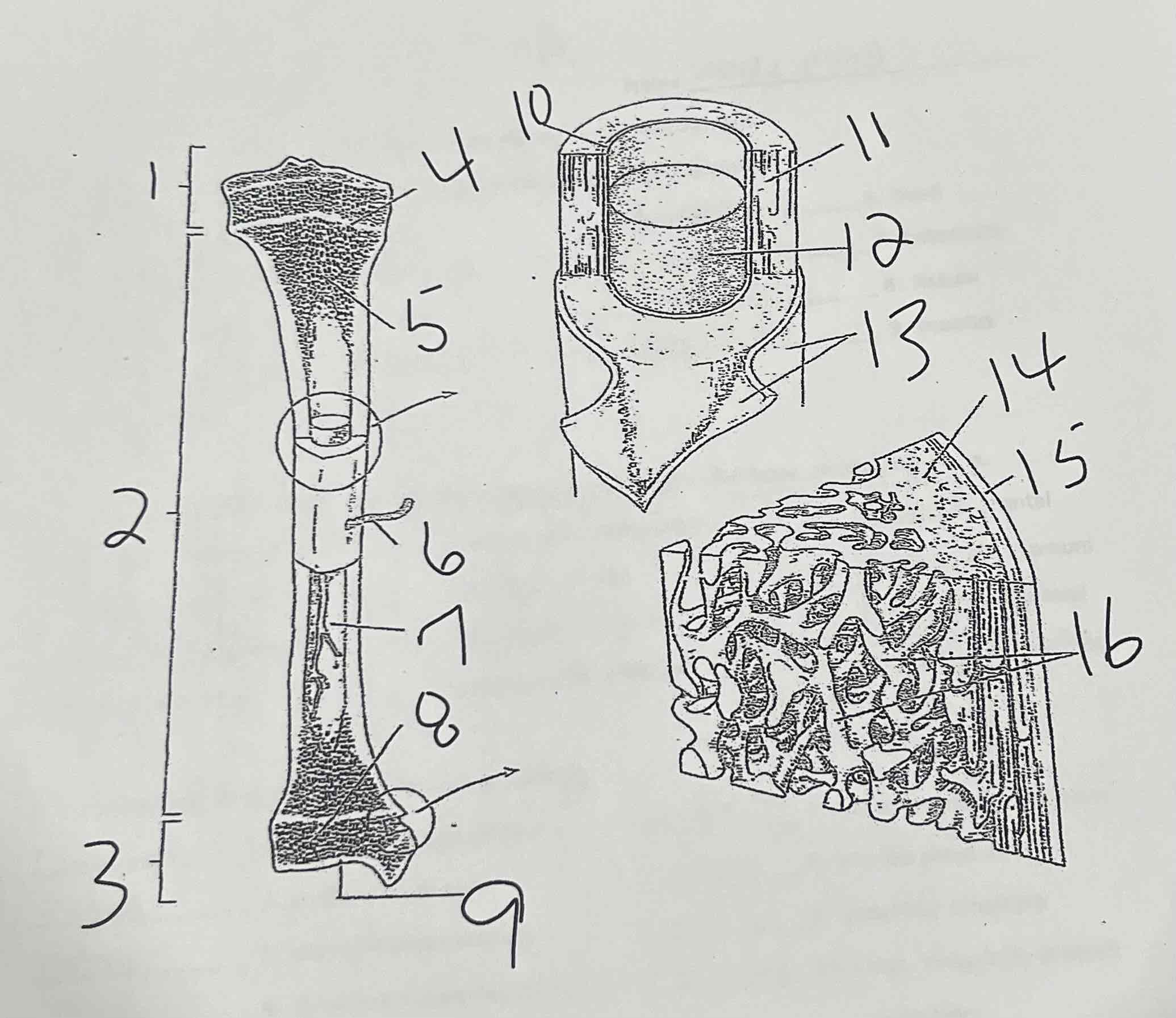
2
Diaphysis
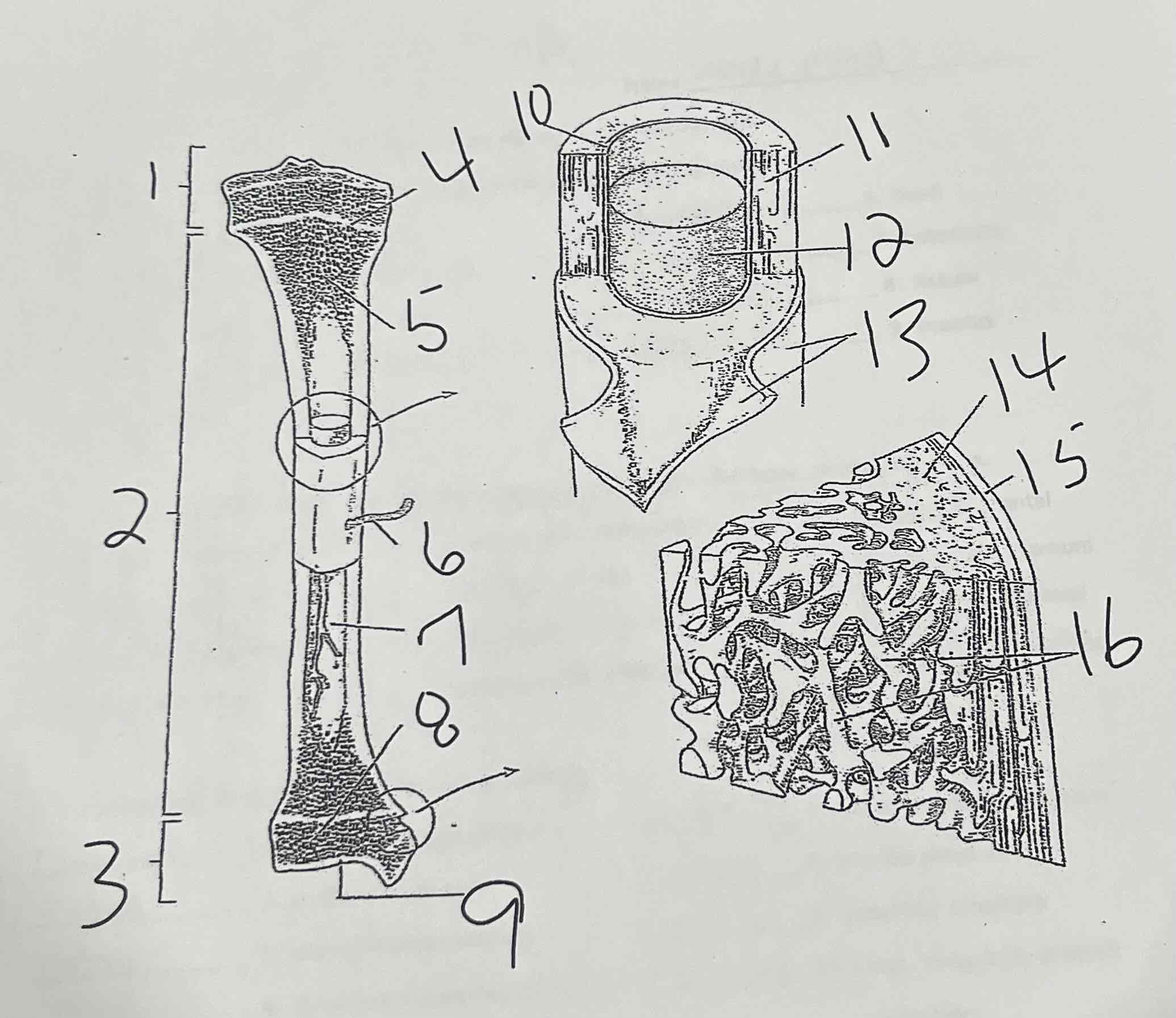
3
Distal epiphysis
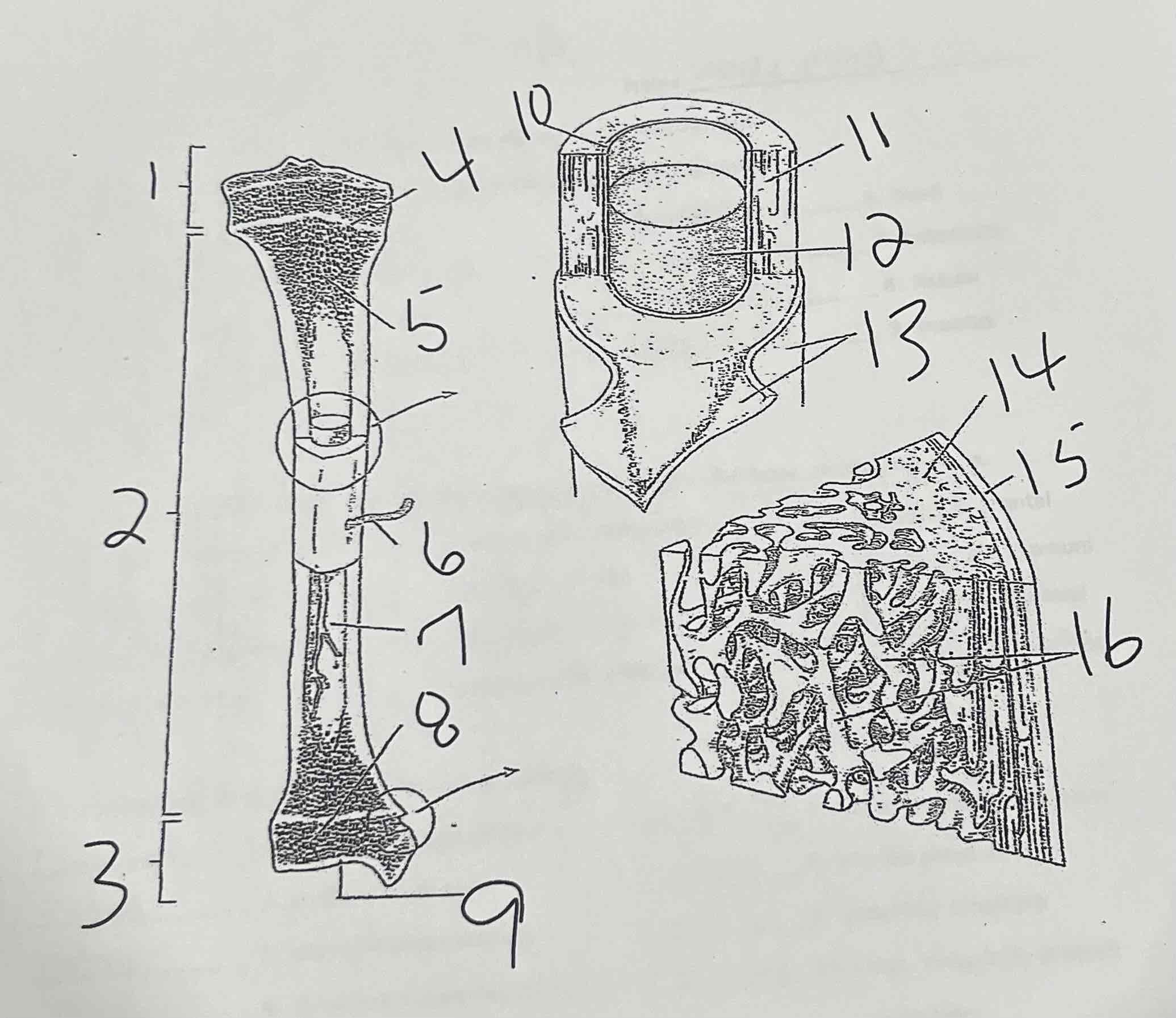
4
Epiphyseal line
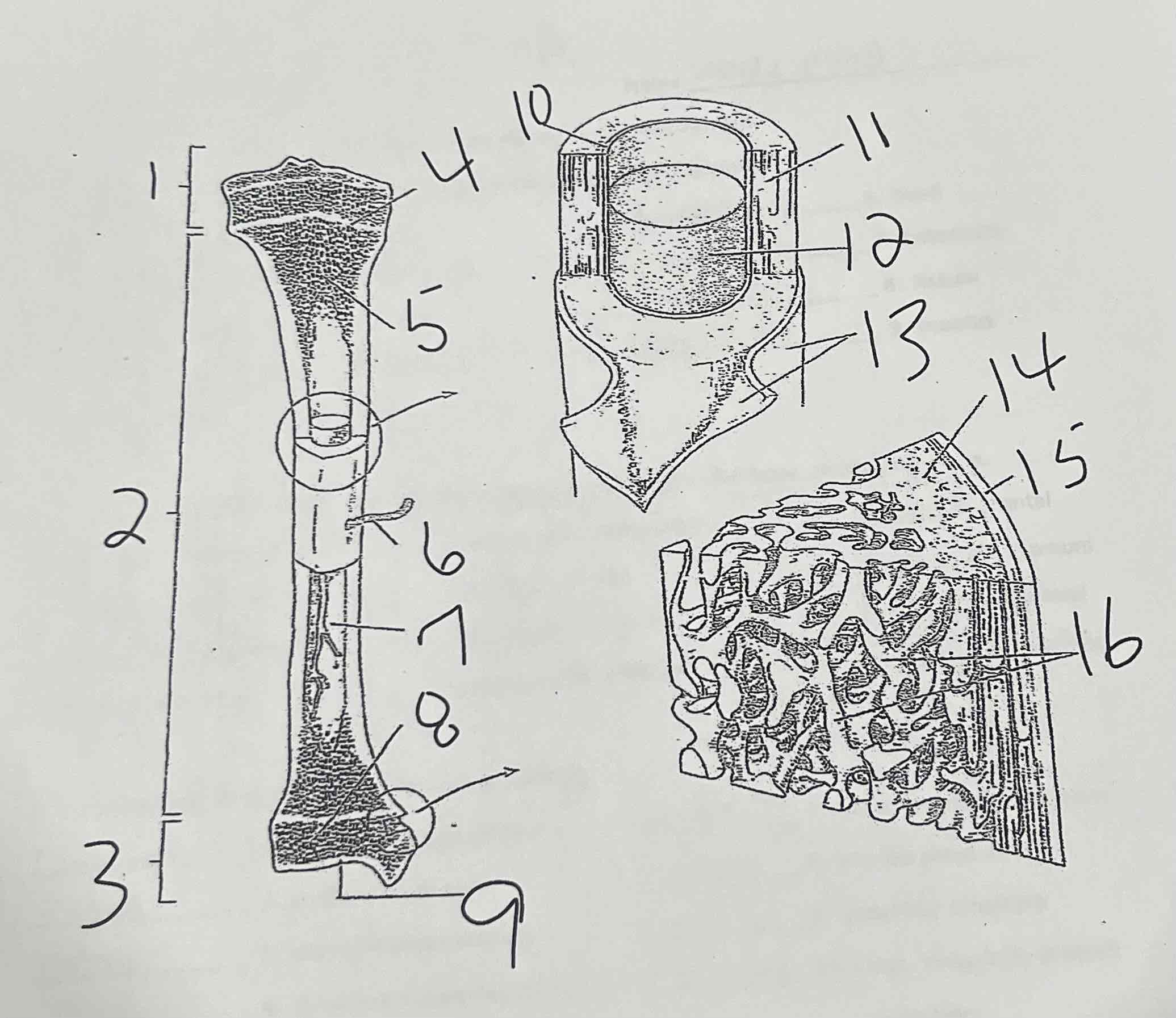
5
Spongy bone

6
Nutrient artery

7
Medullary cavity
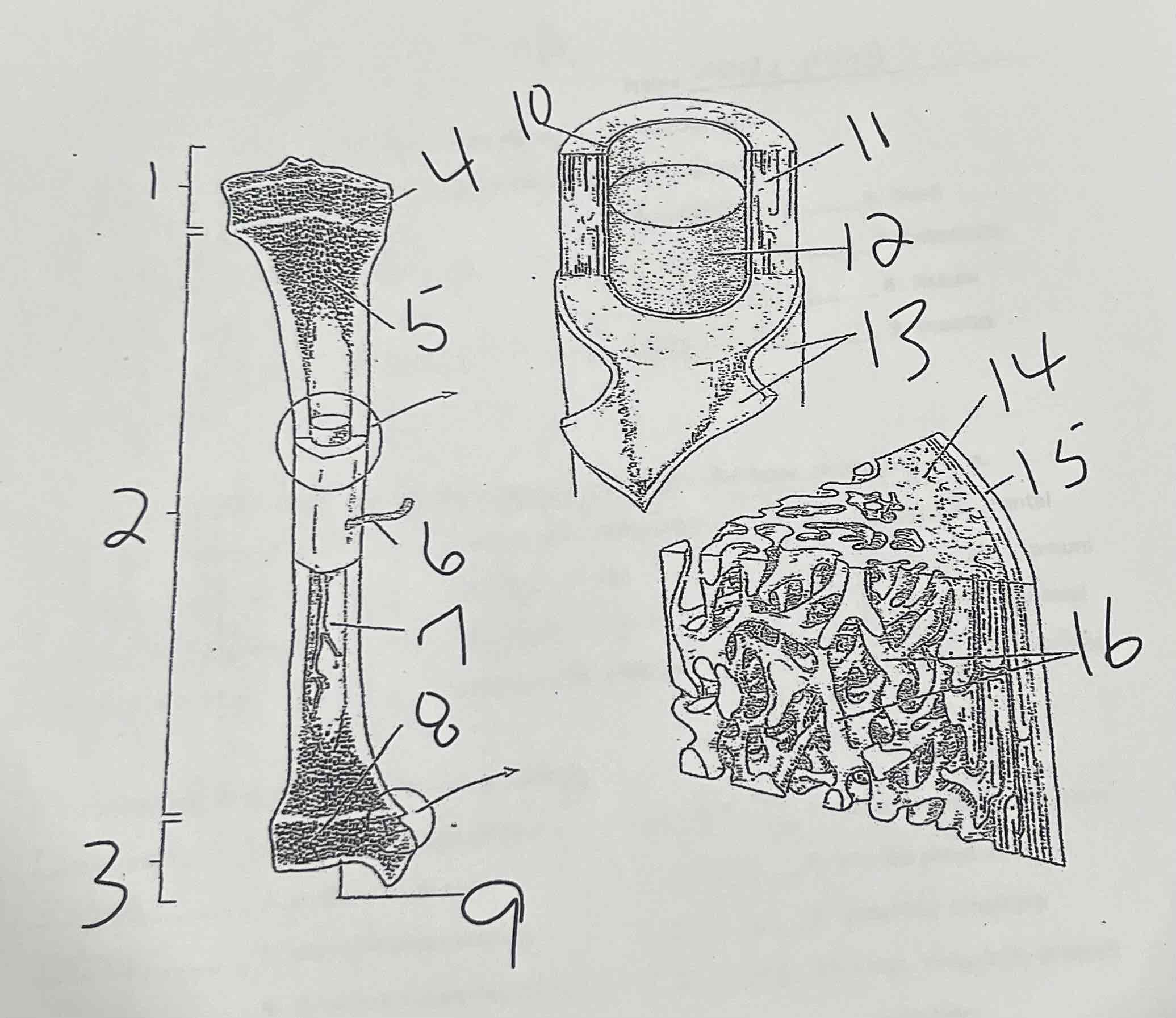
8
Spongy bone
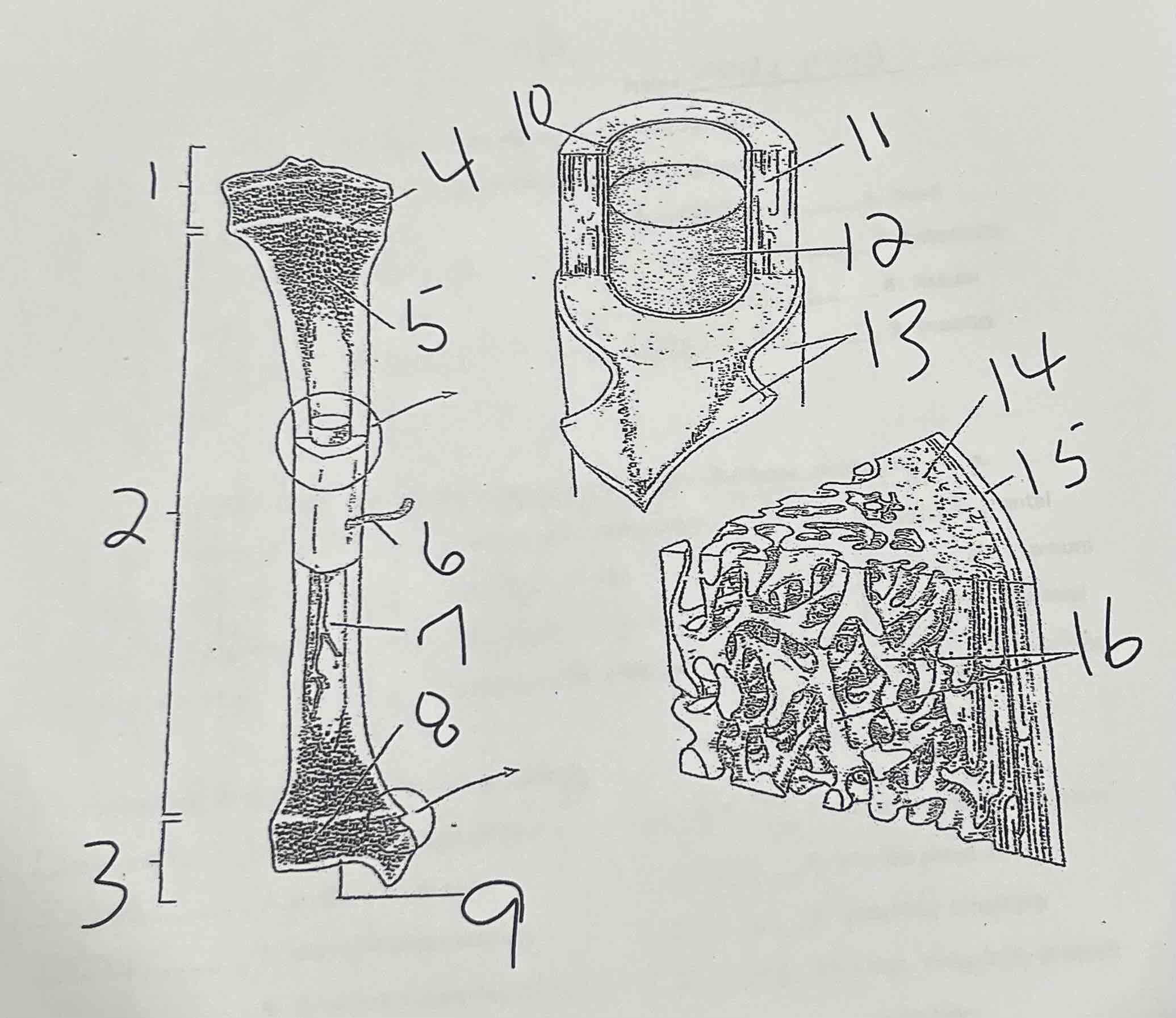
9
Articular cartilage
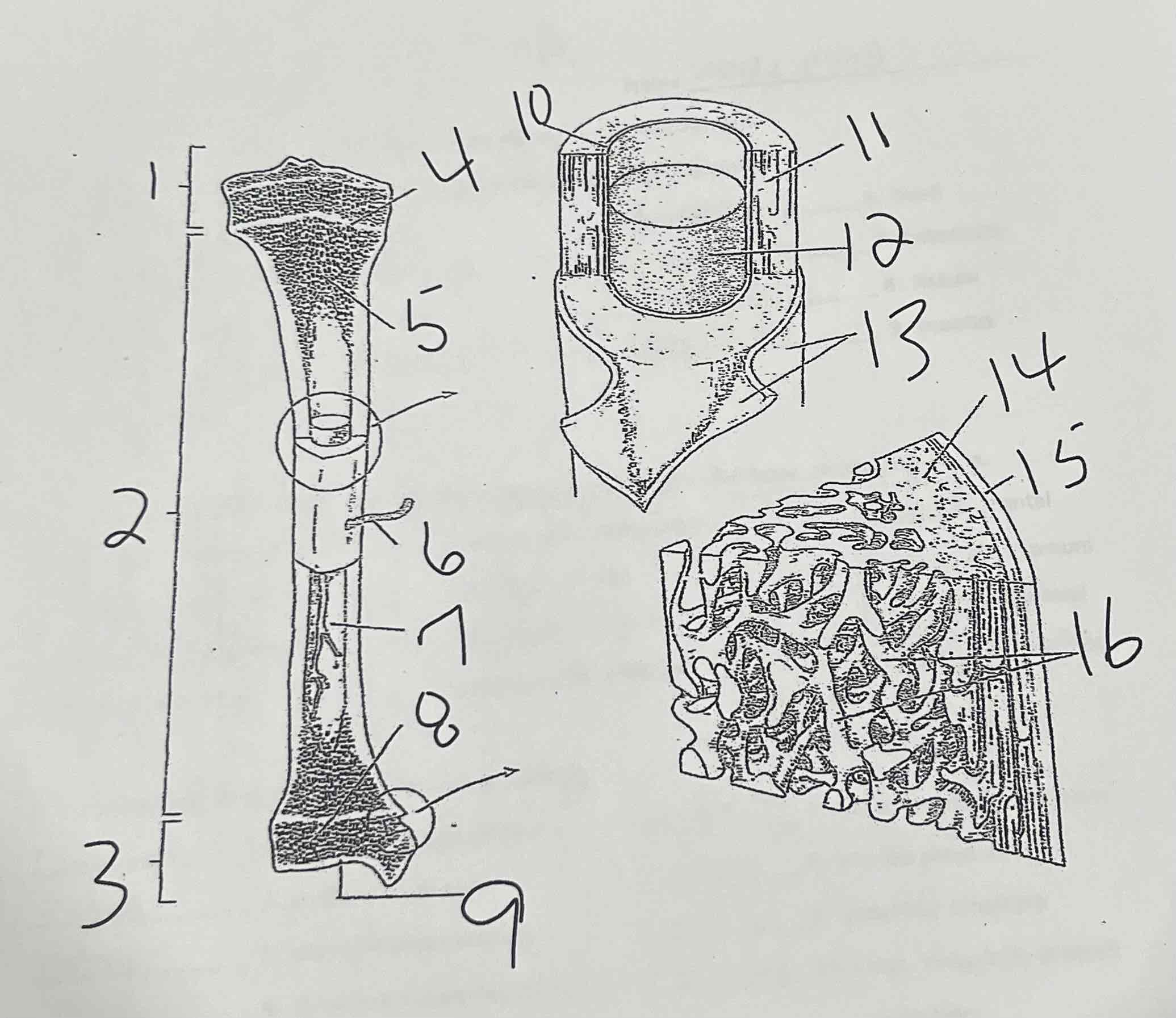
10
Endosteum
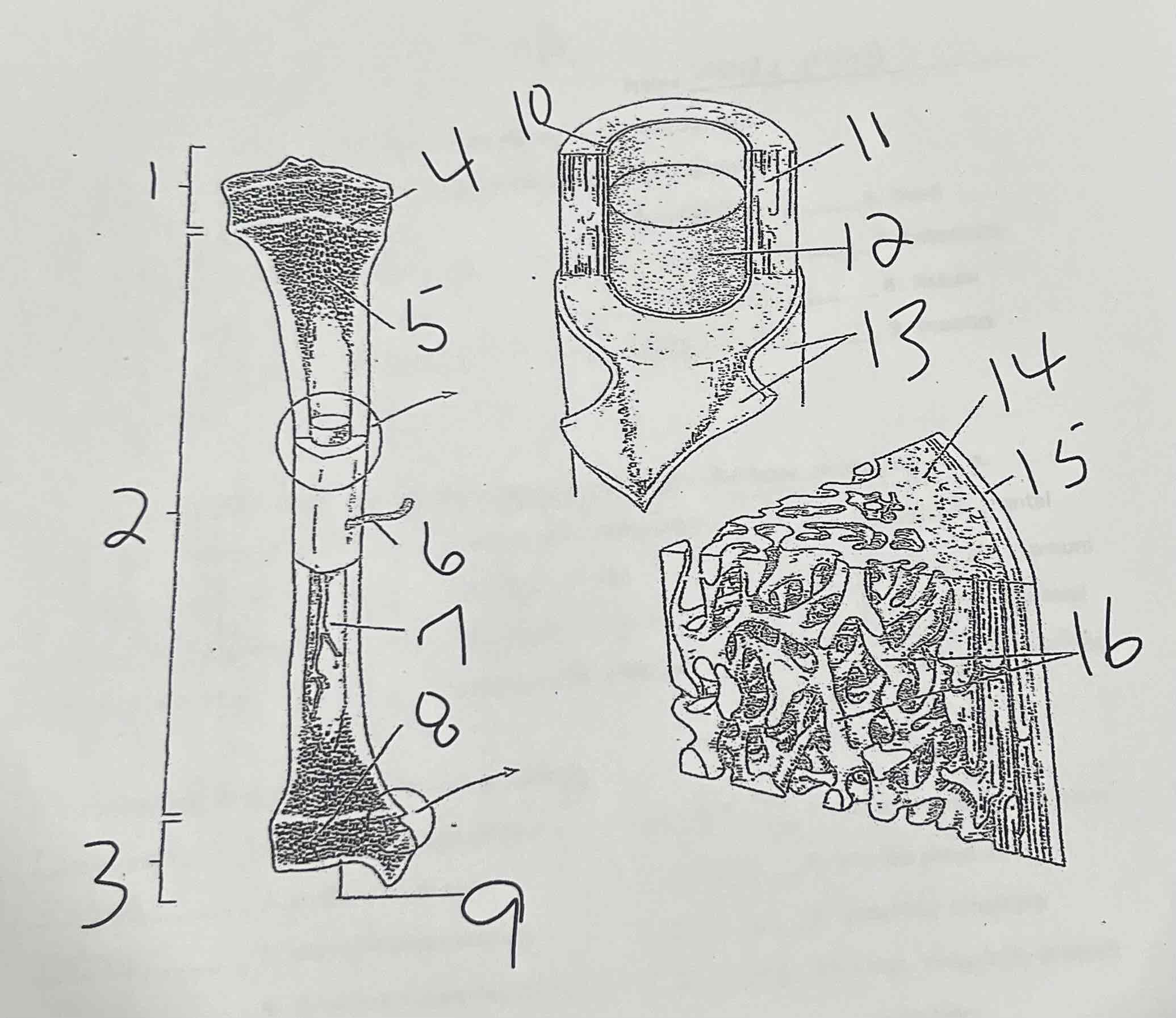
11
Compact bone
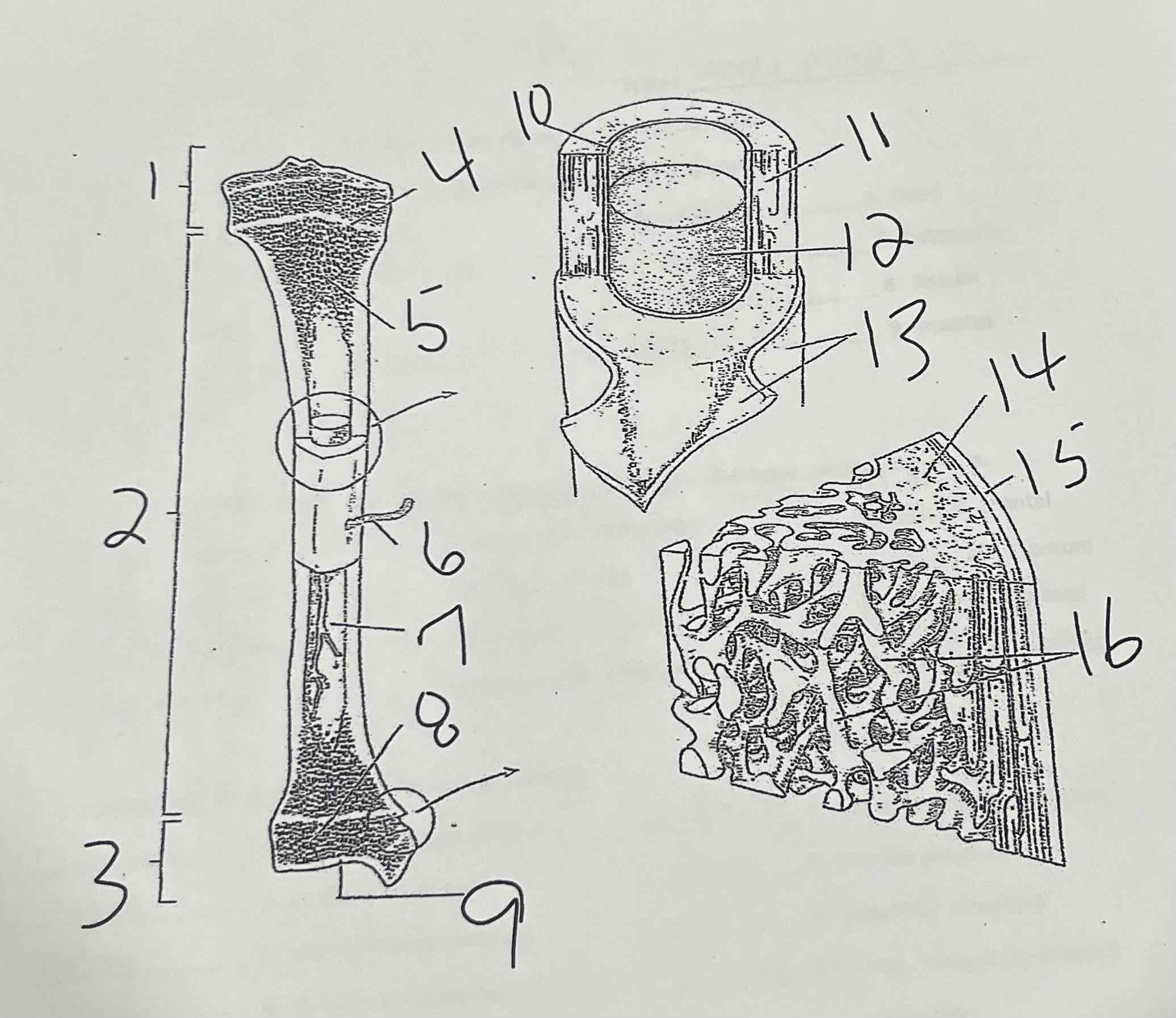
12
Yellow marrow
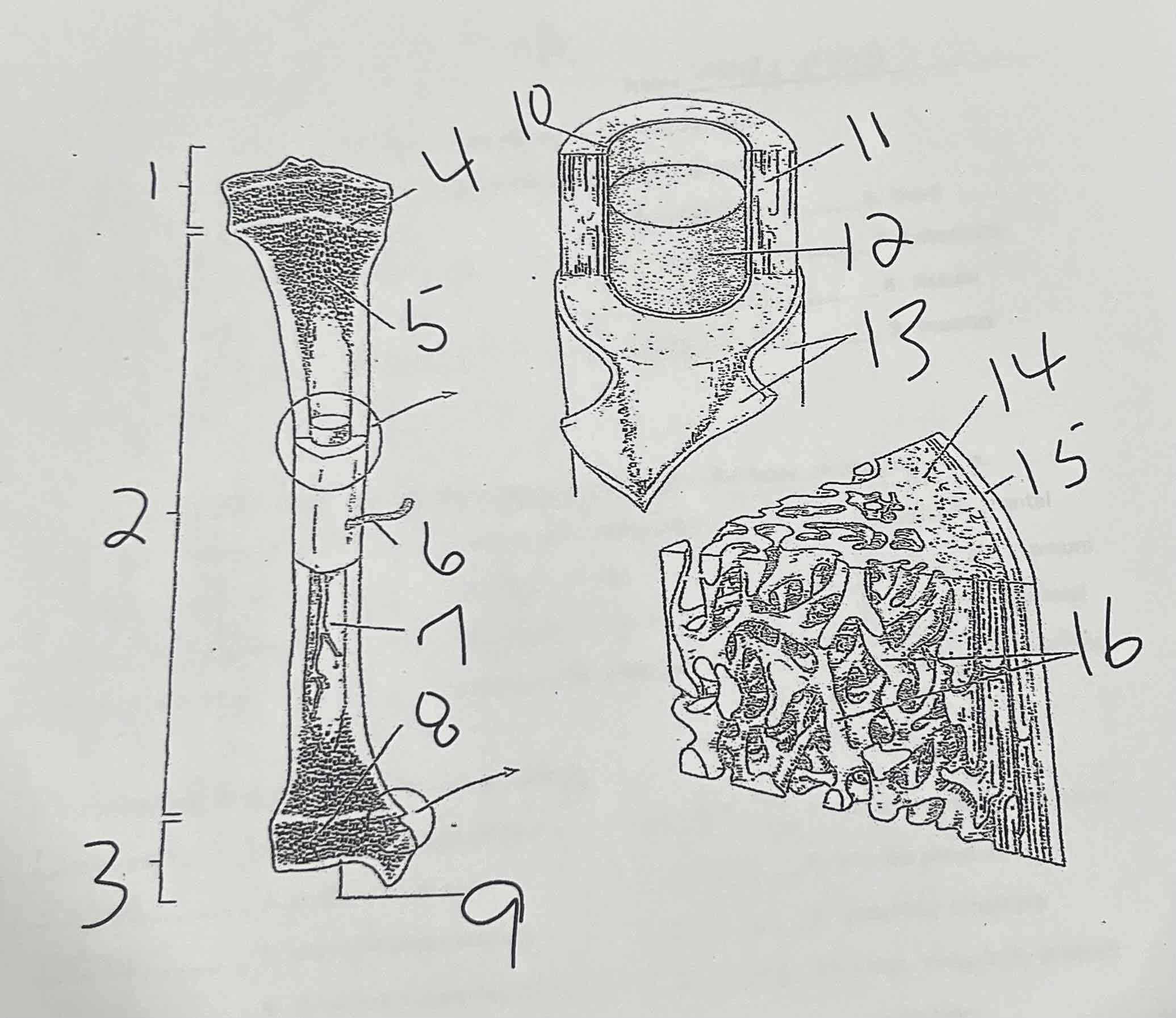
13
Periosteum
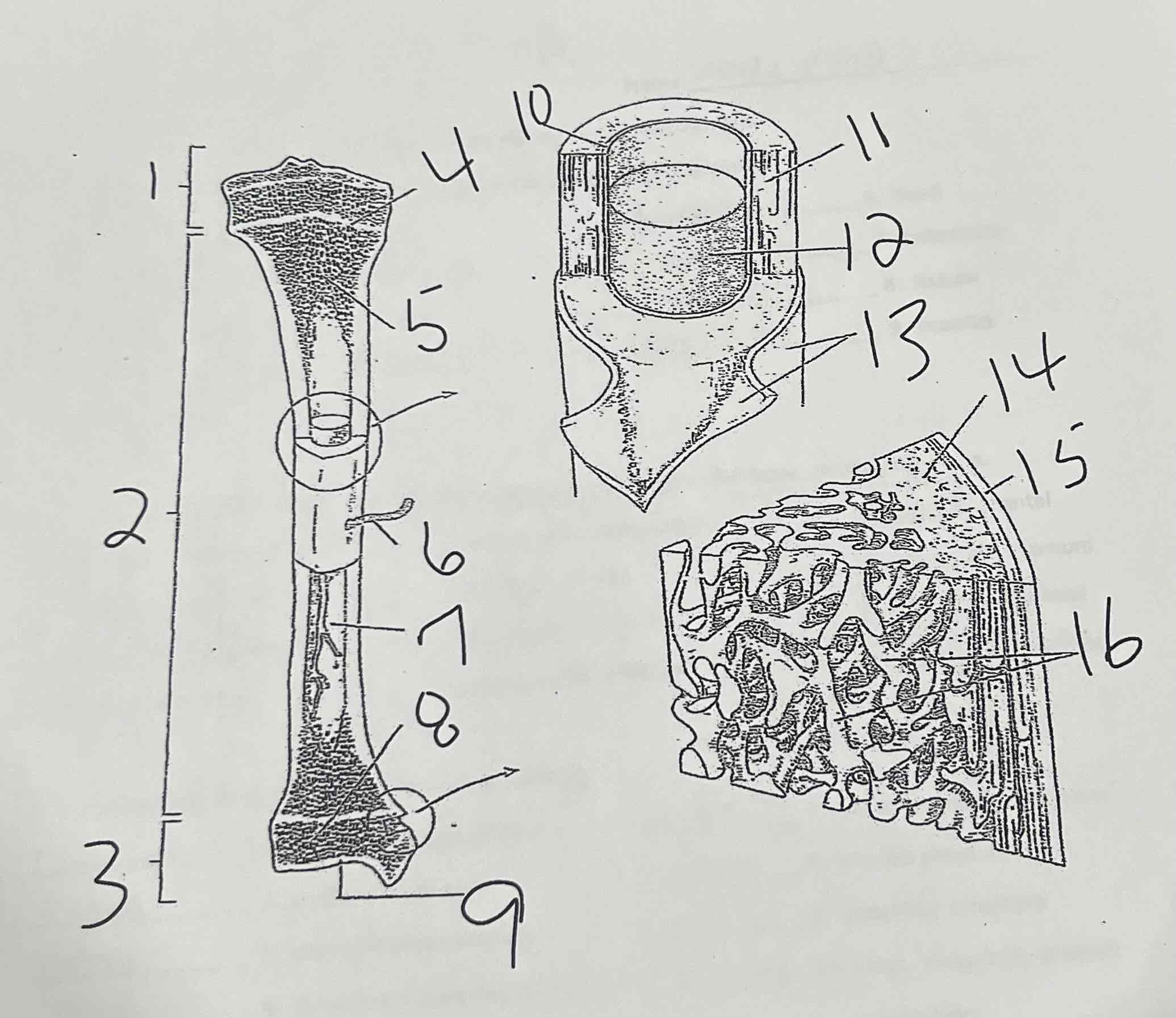
14
Compact bone
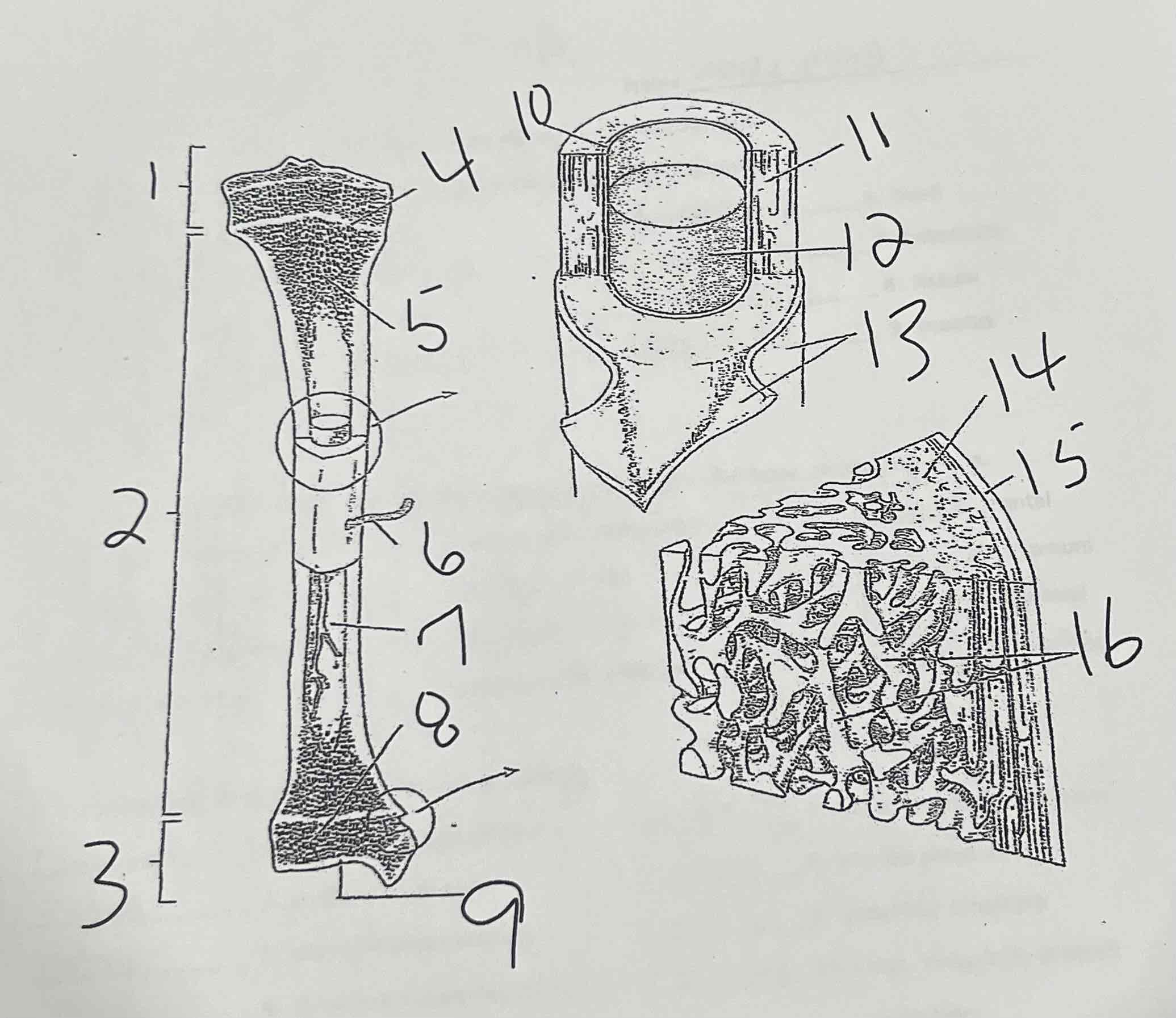
15
Articular cartilage
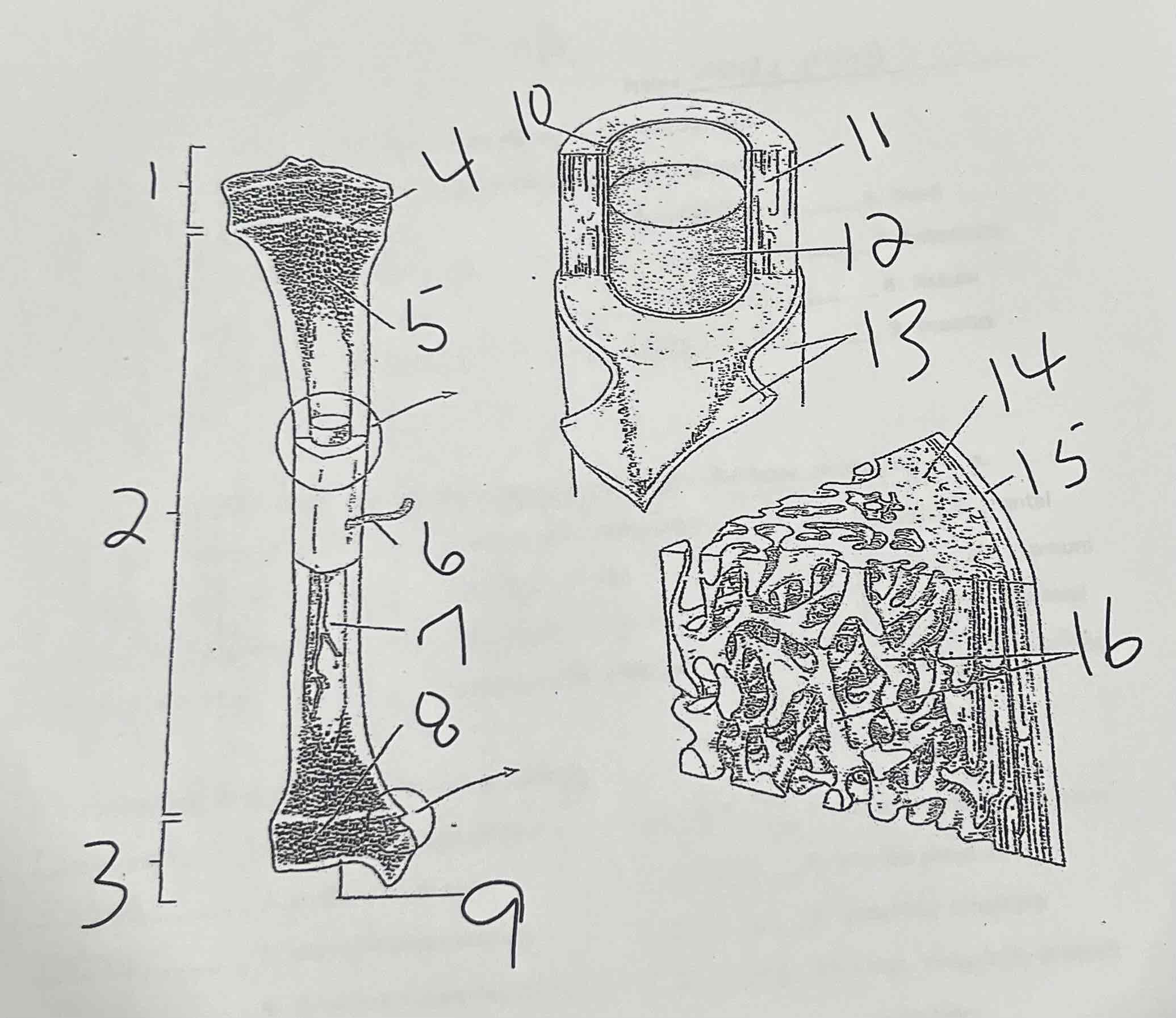
16
Spongy bone
Interstitial fluid:
solution outside the cell